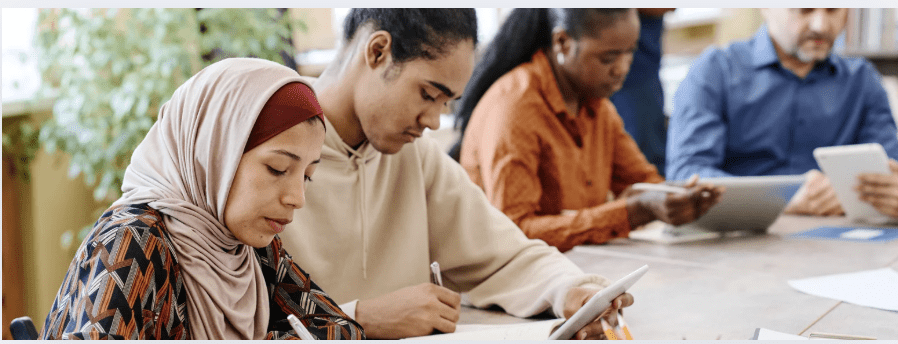Every day, organisations all over the world are attacked by groups that intend to harm their reputation and question their mission. Behind these attacks is a well-crafted strategy that is designed to undermine what they do, how they do it and why they do it.
Many of these groups have extensive resources and all sorts of skills (technological, legal, communication) that they carefully apply to what they share. They try to conjure emotional and rash reactions, to make people share information without checking sources and overall create distrust in certain groups of people and/or organisations.

The cost of inaction
In a world riddled with disinformation, where people speak about every single thing, without any specific knowledge or reflected opinion, and that has these organised groups spewing false information from dusk to dawn, it is quite difficult for organisations to react.
Many times, they lack the resources, the time, the sources for information and even the tech savviness to react in equal measure. Therefore, many choose not to do so, simply because it’s an uphill battle – too difficult to even face. They let the silence linger. And in this, the false information and disinformation campaigns scale, becoming viral, reaching the uninformed, those that prefer easy to understand/short snips of information. Reaching those that were never taught how to question sources or how to debunk false information. It reaches hundreds, thousands, millions.
Paired with all of this, for some odd reason, and especially in NGOs, there seems to be a widespread myth that “everyone can do communication”. So, despite is technicity, it is many times carried out by non-experts. That increases an underlining risk: simply not being prepared to answer. Being attacked by disinformation, hate speech or even other types of violence (to the organisation and/ or beneficiaries) and just not knowing what to do.
An example: attacks on migrant support organisations
Many examples could be shared, but let’s take the case of a migrant support organisation.
The type of attacks are multiple. In some case it is a post on a social media platform with a generalisation like “all migrants are criminals”, sometimes it is more specific: “organisation X is helping lots of useless migrants rip off the State and be dependent on subsidies”.
Sometimes it is more violent: “we must ask the State to start mass deportations of migrants” or even worse – “we should show up were the migrants are and show them they are not welcomed.”
Normally, they are paired with something intended to damage the reputation of the organisation like: “organisation X just uses all of the donor money for their own staff, that stays in five-star hotels”, or “organisation X has been accused of several crimes” (with details on them as if they were true). And everyone knows that reputational attacks are overwhelmingly difficult to surpass.
On the other side, you have severely under sourced organisations, led by people who believe in the cause so much that it is an integral part of their sense of being. Passion dictates that, many times, they will respond to provocation with emotion. In this impulsive reaction, it is easy to say something incorrect, out of line or even speak about issues that should be left confidential. That is definitely a no-no for organisational reputation. The problem is they can also not stay silent. By being silent they implicitly acquiesce. It as if they accept what people are saying about them, about the people they service, about their mission, about their work. That may even be worse.

The solution
So how do you prepare to speak in a timely manner, not letting silence prevail? By having a crisis communication strategy.
Indeed, this helps us not to be impulsive, but also not be silent. It is one of those wonderful intersections between the creative world of communication and that of scenario planning and risk mitigation. In crisis communication we prepare for the worst, we have the knowledge to contradict the real attacks, and the resources ready not to allow silences. Seems simple? Not so much. But also, not impossible.
It is all about understanding possible situations, having the right research and being prepared. Having key messages in different formats and ready to launch. This means investing in your own organisation, your own resources and in building capacity to be reactive and even proactive.
It also means understanding your context and that tools that work for different types of people and organisations.
Understanding social media. Understanding the role of traditional news agencies and media. Understanding what is used to influence and manipulate people.
Understanding the manifestos, the theories, the strategies. Understanding that the perpetrators change their techniques and use new and attractive ways to spread disinformation. Understanding how they reach young people, the disfranchised, the naive, but also politicians and decision makers.
Understanding how they reach our friends, our family, our neighbours. How they convince them of the inconvincible. How they demonize groups with long disproven theories. How they raise fear when it doesn’t exist. How they present solutions for problems that never existed. How they convince people not to question.
Investing in collective truth
So, how do you prepare as an organisation?
You have to learn. You have to read. You have to listen. You have to watch. You need to understand the story that they are telling. And you need to contradict it with facts. You have to be able to produce timely information in attractive formats that can reach at least almost as much people as they do.

Going back to our example on migration it is about knowing the manifestos that call for “remigration” or that try to convince people that there is a “great replacement going on”, and understanding why linking migration to insecurity makes people believe that migrants should have their rights undermined.
It is about having the right statistics, having the right data, having the right sources and credible people to speak and convince them of the facts.
Be prepared to use storytelling yourself, but in an informative way.
Be prepared to capture the lunatic theories and the words they use and challenge them with the facts. Support them in evidence, in international law, and other frameworks that promote dignity and human rights for all.
Learn how to change those narratives and promote empathy. Use the social media algorithms in your favour.
This is crisis communication, the art of having preventive messages on board to react, a team prepared for dealing with all sorts of emergency situations (discovered in the scenario planning), but also a long-term strategy to educate and create awareness for the truth.
Is it easy to do? Maybe not. But worthwhile? For sure.
By having a crisis communication strategy, we are investing not only in our organisation and our reputation, not only in the people we serve directly, but in all those that need someone to fight for their right to be free, informed and educated. Desinformers are striving to take all of that away. So, it is a global investment in collective action, one organisation and one fact at a time.
Avoid the danger of silences. Know how.
About the author

Claudia Pedra is a managing partner of Stone Soup. She has worked in over 100 projects on capacity building and organisational assessments. Also, on strategic planning, project and impact evaluation, financial sustainability and fundraising, advocacy and project management.

